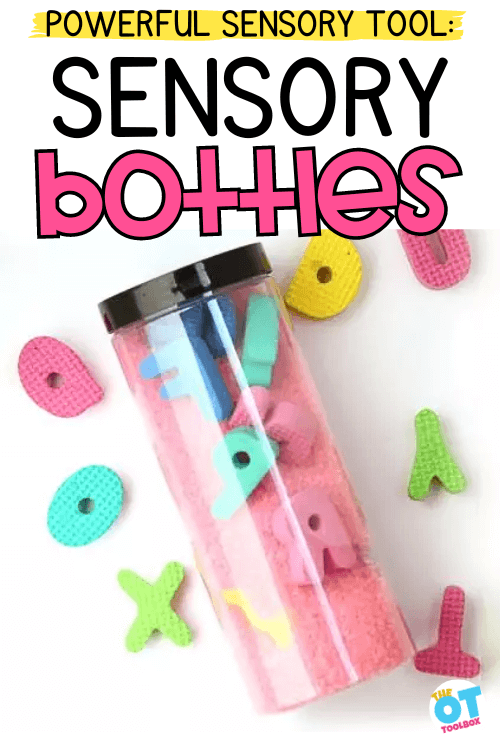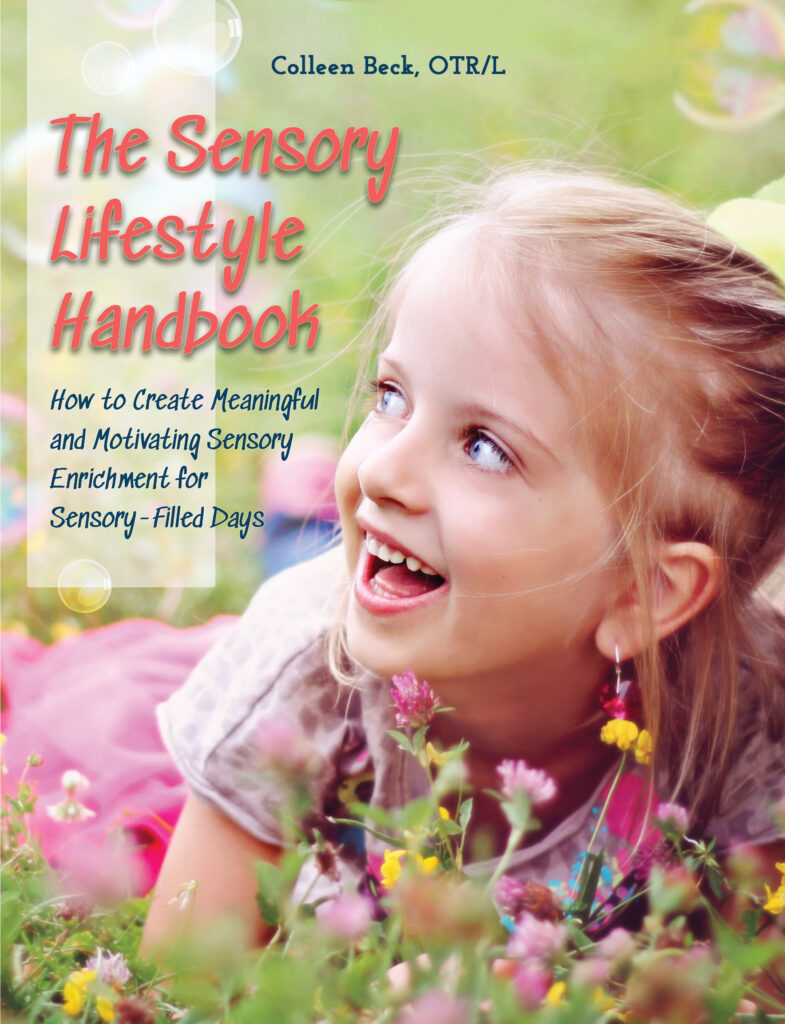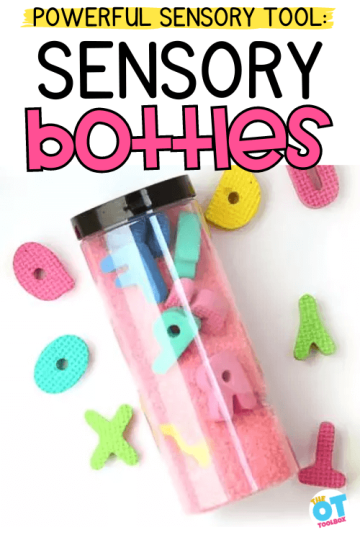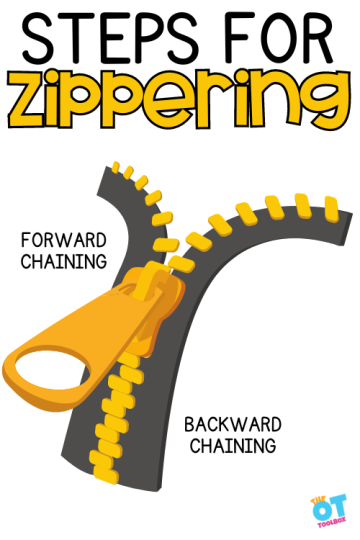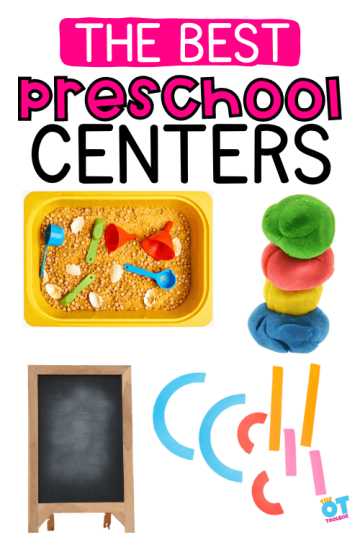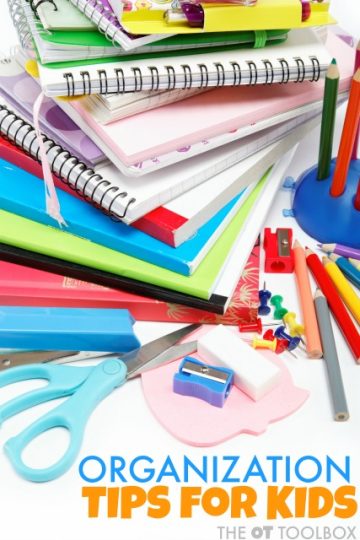It’s that time of year and having a few back to school sensory activities up your sleeve can make all the difference in a stuffy, hot classroom when kids need self-regulation tools after a long summer break. Whether you are looking for classroom sensory diet strategies, or sensory strategies for the school-based OT, putting a back-to-school spin on “sensory” is a hit during the Fall months.
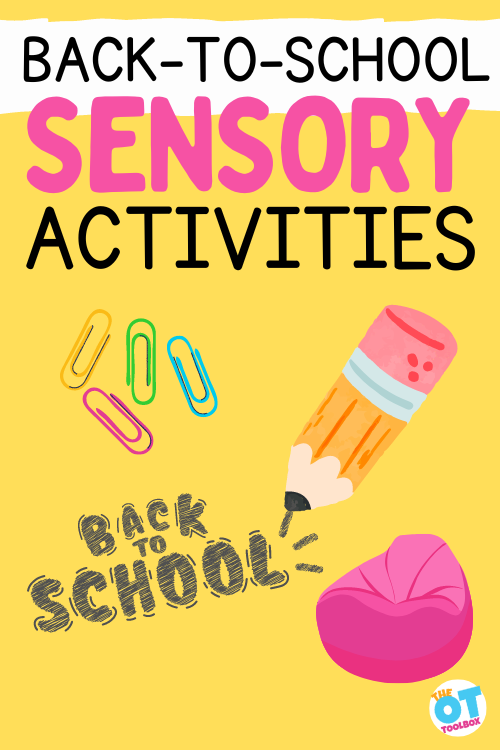
Back-to-School Sensory Activities
The back-to-school season is a prime time to dust off those sensory cobwebs and consider how sensory motor input supports students.
In this blog post, you’ll find a list of ways to support sensory needs using a back-to-school theme. The ideas are great for this time of year when welcoming a new roster of students into the classroom.
- When it comes to back-to-school sensory strategies, you’ll also want to check out free ways to incorporate sensory motor experiences into the classroom.
- Our free sensory strategy toolkit is another great resource that supports school-based OTs, educators, and parents of students with sensory needs.
- You’ll also find many resources, including a printable sensory activity sheet here on this article about calm down strategies for school.
- These ideas for sensory seekers can be adapted to meet school-based needs (or used in the home for homework time, the after-school period, or homeschooling)
Why Use Back-to-School Sensory Activities?
Heading back into the school year can throw some kids for a spin. The first few weeks can be a change in routine from the safety of home. For kids who are starting up on a homeschool routine, it can be difficult to pay attention when sensory needs and distractions are in the next room. This can lead to self-regulation needs that support the student’s ability to concentrate and learn after a summer off from the routines of school.
Other reasons for using sensory strategies during the back-to-school season include:
- Earlier wake-up times after a summer of staying up late and sleeping in. A quick sensory motor brain break can make all the difference.
- A new routine may throw some students for a loop.
- The transition period can be a real challenge for some children. It might be the early alarm clock or using time management in the morning that is a challenge. For other kids, moving to a new school, or even just going back to the classroom in general can be a challenge. Try these transition strategies to support these needs.
- Distractions and Technology: With the prevalence of screen time in kids, and the use of technology/devices, students may find it difficult to focus on schoolwork without being distracted by social media, video games, or other online activities. A quick sensory break can help with attention and distractions.
- Social-emotional needs: Social emotional dynamics can change over the summer, and students may feel pressure to fit in or establish their social identity when school resumes. This pressure can affect their self-esteem and confidence. The ability to regulate emotions might lead to challenges with learning due to the emotional regulation and executive function connection.
You may have a child of your own that “crashes” after a week of school during this time of year. There is a lot happening that is just exhausting during the return to school. Sometimes, all it takes for an easy transition into the back to school days is a sensory strategy that meets the needs of the sensory child. Let’s explore these ideas below…
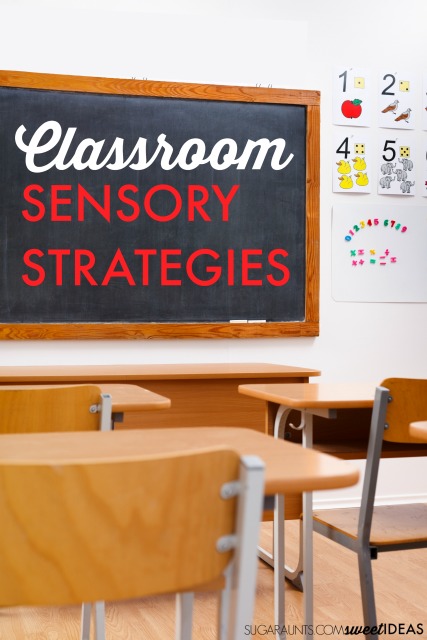
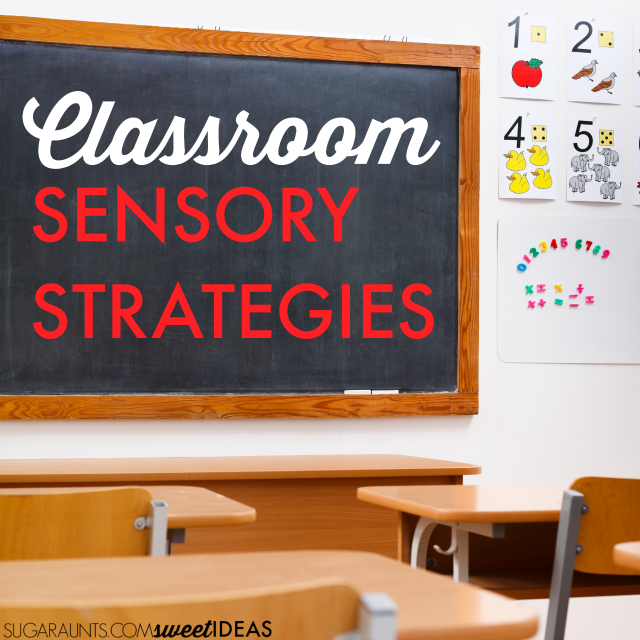
Back-to-School Sensory Ideas
These sensory activities are ones that can easily be used in the classroom or homeschool room. They are strategies that can be incorporated into the student’s daily routine within the school environment.
These school sensory activities are presented in list form for ease and planning, but they can be used in a classroom sensory diet or in various strategies.
The ideas below are ones that easily allow the child to meet their sensory needs in a natural way, so that it is not an interruption to the classroom or other students.
Rather, some of these sensory strategies are movement and heavy work-based ideas that can easily be adapted for the whole classroom for brain break type of activities.
As always, these sensory ideas are ONLY ideas and should be regarded as a reference. Every child is different and has different sensory needs.
The ideas presented below are not regarded as Occupational Therapy treatment and should only be used in addition to and along with an individualized Occupational Therapy plan made following assessment.
Sensory Activities for Back to School
This post contains affiliate links. As an Amazon Influencer, I earn from qualifying purchases.
1. Wall Push-Ups- Show the student how to push against the wall while doing “push-ups” from a standing position. This is a great heavy work activity, or a quick “brain break” activity that provides proprioceptive input for heavy work for improved focus, calming, and self-regulation.
2. Desk Fidget- Use a DIY fidget or a store bought hand fidget toy (affiliate link) to allow the child tactile sensory or proprioceptive input to the hands for improved attention and focus while sitting and performing desk work.
3. Chair Push-Ups- Allow the child to push up from the seat with his arms, keeping the elbows strait. Pushing up through the arms provides proprioceptive heavy work through the upper body.
4. Move desk/furniture.
5. Erase the chalkboard or dry erase board.
6. Sensory errand- Carry milk crates or plastic bins full of books or supplies from center to center around the classroom or from room to room in the building. Some schools have an “important message” to other classrooms or the office in the form of a folder. Just moving, taking a quick walk through the hallway, to deliver a note or other message can offer a much-needed sensory break. For more heavy work input, add a tote bag filled with books or ask the student to push a cart with materials.
7. Shoe laces fidget- Add a couple of beads to the child’s shoe laces for a fidget toy that can be used discretely while sitting in floor circle time or during desk work.
8. Manual Pencil Sharpener- Turning and sharpening pencils with a manual pencil sharpener provides proprioception to bilateral upper extremities. This can be a good task prior to writing tasks.
9. Backpack for carrying supplies from room to room- Students can carry supplies to other classrooms in a backpack for heavy input. This can be a calming strategy while walking the hallways to other areas in the school as well, such as while walking to the lunch room or special classes. The hallway can be an overwhelming and high-sensory environment so deep pressure to center the child can be helpful.
10. Stapler heavy work- Staple paper or remove staples from a bulletin board for upper body proprioceptive input.
11. Sensory seat- Air cushion seating such as a wiggle seat cushion (affiliate link) or a frugal, DIY version using a $1 wiggle seat cushion option. Here are more ideas for alternative seating options and even some DIY flexible seating ideas.
12. Place chairs on rugs. Sliding chairs on classroom floors can lead to auditory overload for some sensory kids. Try using carpet squares under each individual chair. When the child pushes his chair out, he can slide the chair right on the carpet square out from the desk.
13. Hallway March- Get the whole class involved in a “walk this way” activity. They can march from the classroom to specials or the lunchroom. Try other brain break and whole body movements while walking in the line down the hallway, too: Try high knee lifts, toe walking, heel walking, elbows to knees, and patting the knees while walking.
14. Sports bottles for drinking- Sipping water through a long straw or sports bottle (affiliate link) can allow the students to focus and attend given proprioceptive input through the mouth. This is a great whole classroom strategy for helping with attention and self-regulation. Read more about using a water bottle as a sensory tool.
15. Movement breaks in the gym or classroom- A quick brain break can help kids focus during periods of desk work.
16. Push mats in the gym- Moving those big gym mats is a great whole body proprioception activity. Or, ask students to move desks or other equipment that uses the whole body.
17. Auditory support- Headphones for limiting auditory stimulation during center work or times when there is a lot of chatter in the classroom. Here are more tips for auditory sensitivity in the classroom.
18. Visual picture list- Knowing what to expect is a non-traditional sensory strategy. But when you think about it, the visual input is a support when it comes to knowing what is next, how much time is left until lunch, and how much longer the day will last. A visual schedule can be a benefit for the whole classroom. Try this daily pocket chart schedule. (affiliate link)
19. Simon Says Spelling- Try practicing spelling words with a movement and vestibular sensory input Simon Says version. Try these Simon Says commands if there are a few extra minutes to use up during the school day or between transitions.
20. Play dough math for proprioceptive input through the hands. Try a math smash type of activity and use a heavy resistive dough like this DIY proprioception dough. There are many benefits of play dough and sensory input is just one of them!
21. Kneaded eraser for sensory input through the hands- Use a kneaded pencil eraser (affiliate link) for a hand-held fidget that doubles as an eraser with proprioceptive input.
22. Crunchy snack break- Try snacks like pretzels, crackers, kale chips, popcorn, or roasted chickpeas for an alerting snack. Oral motor exercises offer calming or alerting input and using a crunchy (or chewy) snack can support these needs.
23. Sensory bin for math or sight words- Create a sight word sensory bin or even use a sensory bin for math or spelling words. This can be a fun and unexpected way to dive back into spelling after the summer break! Add tactile sensory input to learning using a variety of sensory bin fillers. Ideas include shaving cream, shredded paper, crafting pom poms, among many other ideas.
24. Vibrating pen rainbow writing for sight word or spelling practice- Proprioceptive input to the hands can be very helpful for many kids, especially if they are writing with too much pencil pressure.
25. Jump/move/hop in hallway- Take a movement and brain break with a hallway movement activity. Add learning aspect with spelling, facts, or math.
26. Roll a ball on the legs- Add a vestibular aspect to vocabulary or themed learning, including history, English language arts, or science. Kids can answer questions and when they answer the question, they roll the ball along their legs by bending down to roll the ball on their thighs.
27. Hopscotch Math- Add a hopping proprioception activity to the classroom with a hopscotch board created right in the classroom using masking tape.
28. Graph Paper Writing- Add a visual sensory twist to handwriting, math, spelling, or any written work by using graph paper. The added lines can be just the visual spatial prompt needed for kids with visual sensory processing concerns. Here are more sensory based reasons to use graph paper.
29. Make a desk sensory diet box- Use a dollar store pencil case to create customized sensory diet bins that can fit right into the desk. Items would be used specific to the child’s needs, but might include resistive putty, paper clips for fidgeting, or movable toys (affiliate link). Use these occupational therapy kits for more ideas.
30. Wash desks with spray bottles. Squeezing a spray bottle to wash desks or water plants offers heavy work through the hands.
31. Cut classroom decorations from oaktag. Heavy input through the hands by cutting thicker paper is a great way to add a quick and functional movement break. Students will love to see their handiwork on the walls, too.
32. Create a calm down corner in the classroom– This can include fidgets, mindfulness centers, books, and many more sensory tools. Plus try these other calm down strategies for school.
33. Try a sensory swing- Sensory swings for modulation can be used when applicable and recommended by an occupational therapy provider. Sometimes, you’ll see these in a sensory room or in a therapy room in the school. Here is more information on types of sensory swings.
34. Use the playground! Getting those students outside can make a great sensory movement break. Check out how to use the playground for sensory input and read this resource on sensory diets at the playground.
All of these ideas support sensory needs and are great activities to use during the back-to-school time. We love that they are fun, functional, and the whole classroom can benefit!
Want more ideas to support sensory needs at school? Grab a free copy of our Classroom Sensory Strategy Packet.
Related resources include our blog post on Ayres Sensory Integration. This is a great place to start with gathering information on the sensory processing systems and the related behavioral, emotional, physical, and cognitive responses that we see.

Colleen Beck, OTR/L has been an occupational therapist since 2000, working in school-based, hand therapy, outpatient peds, EI, and SNF. Colleen created The OT Toolbox to inspire therapists, teachers, and parents with easy and fun tools to help children thrive. Read her story about going from an OT making $3/hour (after paying for kids’ childcare) to a full-time OT resource creator for millions of readers. Want to collaborate? Send an email to contact@theottoolbox.com.
The Sensory Lifestyle Handbook walks you through sensory processing information, each step of creating a meaningful and motivating sensory diet, that is guided by the individual’s personal interests and preferences.
The Sensory Lifestyle Handbook is not just about creating a sensory diet to meet sensory processing needs. This handbook is your key to creating an active and thriving lifestyle based on a deep understanding of sensory processing.

